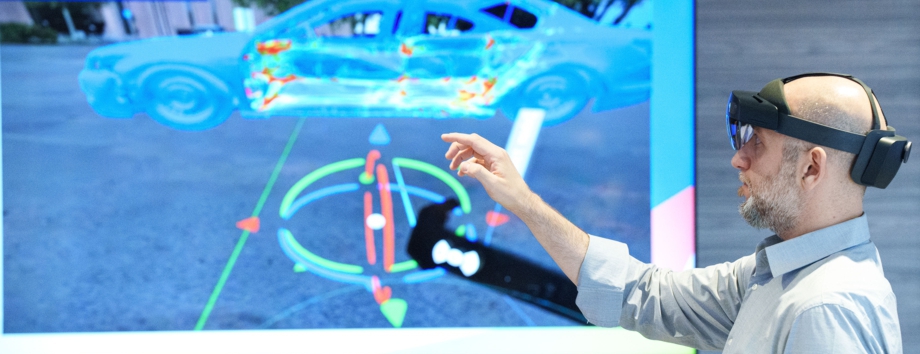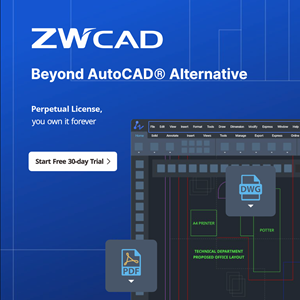LUCERNE, Switzerland, Aug 1, 2023 – BETA CAE Systems is excited to announce the release of the highly anticipated major version v24.0.0 of its product line, featuring ANSA, EPILYSIS, META, KOMVOS, and FATIQ.

This brand-new release empowers engineers with enhanced simulation capabilities, addressing the growing complexity of demanding markets that rely on the powerful tools offered by Engineering Simulation. With a strong focus on process acceleration, the release delivers high-performance tools, innovative features, and optimized methods tailored to diverse industries.
Experience the unparalleled power of Engineering Simulation like never before!
Do not miss:
- The evolution of eXtended Reality in ANSA & META.
- The groundbreaking algorithms for Mapblock decomposition and Subdivision surface modeling, as well as our novel solutions for Hexablock – Tubular Modeling.
- The new, faster and more robust CFD meshing algorithm for the anisotropic mesh treatments and core surface mesh areas.
- The significant AMLS and SOL200 enhancements, coupled with optimized memory management in EPILYSIS.
- The enriched capabilities for Electromagnetics simulations with ASERIS in ANSA & META.
- The implementation of Human Body Models tool in META for the calculation of Ribs Fracture Risk for GHBMC, SAFER, and THUMS models.
- The most powerful, yet user-friendly desktop client for Simulation Process and Data Management, stemming from the adjoined forces of KOMVOS and SPDRM.
- The enhanced calculation methods and analysis set-up in FATIQ.
New version Highlights
Solutions for every stage of product development with ANSA
New Meshing algorithms are introduced in the new release, leading to top-notch results, coupled with efficiency and minimized turnaround time. In specific, Mapblock decomposition offers automatic decomposition into mappable sub-volumes, whereas identification and editing of Revolute FE Solids is now feasible via a dedicated functionality. Furthermore, a significant speed-up of middle mesh by distributing subparts workload has taken place in this release, all through a complete process managed by ANSA DM.
In a similar manner, placing the focus on CFD, a new, faster and more robust CFD meshing algorithm for the anisotropic mesh treatments and the core surface mesh areas has been implemented in Batch Mesh, coupled with an option to compare multiple batch mesh sessions to pinpoint different settings or synchronize selected mesh parameters. Furthermore, Size Field functionality specifies different maximum length at each box corner point and exports iso-surfaces out of the built Size Field and a new, semi-automatic tool allows for the creation of boxes for tubular models in the field of Hexablock – Tubular Modeling.
In the area of Crash & Safety, existing tools are being enhanced even more with further options and expanded functionality. For instance, Marionette tool has been enriched with SPC and Gravity options and SeatBelt tool allows for quick Seat Belt definition, preview of total Seat Belt length, highlight of penetration during Interactive Move and smooth adjustment of the Seat Belt after Intersective Move. Moreover, an enhanced algorithm for the identification of the interior’s FMVSS201U Low Speed Zone has been implemented and morphing capabilities to reduce excessive element compression and enable deformation of the seat’s lower frame are also significant aspects of v24.0.0.
Live adjustment of several shape characteristics and automatic feature recognition, improved capabilities that enable members elongation, starting from existing Cross Sections with automatic flanges generation & adaptation and direct creation of slopping-ends members, flanged onto the underlying surface, are now a reality in the new version. In addition, groundbreaking functionality in v24.0.0 bridges the CAE-to-CAD gap by easily creating subdivision surfaces from optimization results or scanned data.
On top of that, new optimization algorithms and RSM KPIs and training data plots have been introduced, whereas Kinetics DOE/Optimization tasks are now supported within the Optimization Tool, to perform optimization on MBD simulations using dedicated optimization tasks for Kinetics.
As VR and AR implementations have been paving the way to XR, Dummy Articulation, Kinetics Configurator and Kinetics Simulator are now a part of VR and VR collaboration, whereas thanks to the new BETA Holographic Remote App, simulation can be directly matched with physical model with the use of QR code and streamlines can be overlayed on physical model.
Closing with User Productivity, the new version is enriched with the capability to output the geometric description with or without facetted data into a .jt file, an enhanced Merge Models functionality allows for a more efficient handling of all issues related to id and name conflicts and the embedded Python interpreter has been updated from Python 3.8 to Python 3.11.2.
Significant enhancements and optimized memory management in EPILYSIS
Several noteworthy upgrades come with the release of v24.0.0.
Some representative ones refer to AMLS, with improved robustness of the algorithm, increased flexibility through additional parameters and enriched diagnostics in f06 file, as well as to SOL200, with optimization of time, memory and disk size through the introduction of SPARSEDR and SPARSEDM.
In addition, out-of-core operations have been improved leading to reduced assembly time and disk usage.
Enhanced user experience in META
The new release has much to offer in the domain of eXtended Reality, with the implementation of concurrent collaboration. In specific, cut planes, sketches and annotations, as well as streamlines – streaklines and iso-functions can be simultaneously created and edited. Moreover, thanks to the introduction of BETA Holographic Remote App, simulation can be directly matched with a physical model with the use of a QR code to overlay streamlines on the physical model.
In the field of Crash and Safety, following ANSA, Human Body Models are gaining ground also in META with a dedicated tool that allows for the calculation of Ribs Fracture Risk for GHBMC, SAFER and THUMS models, as a function of Rib Strain and Age. The Seat Impact tool has been further enhanced to post-process target points of Seat Impact analysis.
Other discipline-oriented implementations refer to NVH Insights, with the on-demand calculation of diagnostic results (Participations, Sensitivities, TPA) during NVH calculations or from Nastran SOL111 results, as well as the fast evaluation of bolted joints according to VDI 2230 for 2D and 3D bolt FE representations, thanks to the introduction of the Bolt Assessment tool.
Furthermore, in the area Molding, users can now visualize the deviation from the best fit plane and calculate surface flatness error with the newly introduced Flatness assessment tool. It is now also possible to calculate the roundness error of circular areas according to Minimum Zone Circles (MZC), Minimum Circumscribed Circle (MCC), Maximum Inscribed Circle (MIC) and Least Square Circle (LSC) through the Roundness assessment tool.
Last but not least, continuously expanding our keyword and format support, residuals, monitors and 2D plots can now be read from STARCCM+ .sim and .sim.gz files. High order elements are supported through IMPETUS and VTK files, curves can be read from physical test results data stored in DIADEM TDMS file format and the embedded Python interpreter has been updated from Python 3.8 to Python 3.11.2.
Reintroducing KOMVOS as an SPDM desktop client
KOMVOS and SPDRM join forces to present the most powerful, yet user-friendly desktop client for Simulation Process and Data Management. .
This integration combined KOMVOS’ robust features for model build with SPDRM’s data, process and issue management functionality, resulting to an unparalleled solution for Process and Data Management. .
Furthermore, significant enhancements in Machine Learning allow for Inverse Predictions, Remote Predictions, as well as an interpretable Machine Learning, providing more clarity on Predictors behavior with Partial Dependency plots, What-if plots, Breakdown plots, SHAP plots and Ranking of DV according to Importance plots.
Enhanced calculation methods and analysis set-up with FATIQ
The new release comes with upgraded FATIQ features and implementations. For instance, E-N (Strain Life) analysis is further expanded, based on linear stresses in time domain. Plasticity correction can also take place through Neuber equations, as well as Smith – Watson – Topper and Morrow mean stress correction methods.
Furthermore, new load types in Frequency domain (Narrow band and Sine) and in Time domain (Sine, Sine Sweep and Constant Amplitude Blocks) allow for the Creation of deterministic loads in frequency and time domain.
Closing, input data with different units and unit systems can be used and will be automatically converted.
For more details about the new software features, enhancements and corrections please, refer to the Release Notes document.
New Documentation in ANSA
User Guides
- Optimization Algorithms
Tutorials
- Model preparation for Metal Casting Simulation with ProCAST
New Documentation in META
User Guides
- Bolt Assessment Toolbar
- Flatness Assessment Toolbar
- Roundness Assessment Toolbar
Compatibility and Supported Platforms
- ANSA files saved by all the first and second point releases of a major version are compatible to each other. New major versions can read files saved by previous ones but not vice versa.
- META Project files saved from version 24.0.0 are compatible and can be opened by META version 16.0.0 or later.
- Support for Windows 7 has been discontinued.
- Support for Red Hat 6, and other Red Hat 6 compatible Linux distributions has been discontinued.
- Support for Mac OS has been discontinued.
- Support for 32-bit platforms has been discontinued for all operating systems.
Download
Where to download from
Customers who are served directly by BETA CAE Systems, or its subsidiaries, may download the new software, examples and documentation from their account on our server. They can access their account through the “download” link at our web site.
Contact us if you miss your account details. The Downloads menu items give you access to the public downloads.
Customers who are served by a local business agent should contact the local support channel channel for software distribution details.
What to download
All files required for the installation of this version reside in the folders named “BETA_CAE_Systems_v24.0.0”, “KOMVOS_v24.0.0”, and “FATIQ_v24.0.0” and are dated as of July 28, 2023.These files should replace any pre-releases or other files downloaded prior to that date.
The distribution of this version of our pre- and post-processing suite is packaged in one, single, unified installation file, that invokes the respective installer and guides the procedure for the installation of the required components.
For the installation of the software on each platform type, download from the respective folders, the .sh file for Linux or the .msi file for Windows.
In addition to the above, optionally, the META Viewer is available to be downloaded for each supported platform.
The tutorials and the example files reside in the folder named “TUTORIALS”. This folder includes the complete package of the tutorials and example files, and a package with only the updated ones.
The Abaqus libraries, required for the post-processing of Abaqus .odb files, are included in the installation package and can be optionally unpacked.
Earlier software releases are also available in the sub-directory called “Previous_Versions” or in a folder named after the product and version number.
About BETA CAE Systems
BETA CAE Systems is a private engineering software company committed to the development of state of the art CAE software systems that meet the requirements of all simulation disciplines. The company’s products, the ANSA pre-processor/ EPILYSIS solver and META post-processor suite, and SPDRM, the simulation-process-data-and-resources manager, hold a worldwide leading position across a range of industries, including the automotive, railway vehicles, aerospace, motorsports, chemical processes engineering, energy, electronics, heavy machinery, power tools, and biomechanics.
Committed to its mission to produce best-in-class CAE software systems, BETA CAE Systems offers products that consistently exceed expectations and provides exemplary technical support to its customers. The company’s continuously growth attest to the high level of customer satisfaction and user confidence. For more information, visit http://www.beta-cae.com.






